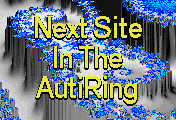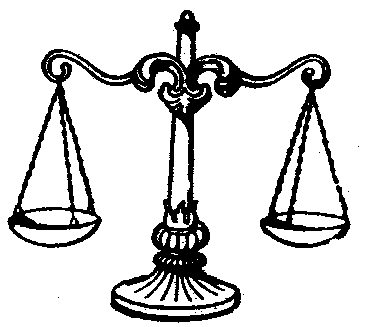![]() Classical autism in its more severe form, which results in mental
retardation, occurs in about 1 in every 1,000 births, she said. When
milder
forms of autism like Aspberger's syndrome are included, the incidence
is 1
in 500.75% of the individuals affected by autism are males. The common feature among all children with autism is a lack of
social relatedness. The disorder hinders
development
of the abilities not only to communicate, but to form attachments,
explore
the surroundings, and sometimes even to play. This can result in severe
impairment of intellectual, social, and emotional fabric. Autistic
individuals often seem completely oblivious to affection, the
environment
they live in, and the people around them. They rarely talk, often make
bizarre responses to common aspects of living, and are quite capable of
withdrawing into a world of their own.
Early indicators include little eye contact, little reaction to
one's
touch, prolonged episodes of screaming and head-banging, and long
periods of
total inactivity. One in 10 autistic individuals shows savant
tendencies
(such as those depicted in the movie "Rain Man"), where persons with
seemingly serious mental handicaps excel in a single area of intellect.
Risk of autism has been tentatively linked both to abnormalities in the
structure of certain chromosomes (Fragile X syndrome), and to unusually
high
levels of endorphins, so the causes may be genetically more biological
than
psychological. Also at risk are offspring of mothers who contract
rubella
(German measles) during pregnancy.
There is no known cure for autism, though a number of activities
and
therapies do help to bring autistic people out of their shells.
Megavitamin
therapy with vitamin B6 and folic acid, for example, and the drug
naltrexone
have improved attention spans and social skills in some sufferers.
Early
detection can be made either by measuring fetal levels of folic acid,
or by
conducting prenatal chromosome analyses where Fragile X syndrome is
suspected.
A number of research projects involving experimental preventive
measures have been reported in the current medical literature. Some of
these
experiments may prove to be helpful either in reducing the risk of
autism in
offspring, or perhaps preventing it altogether: (1) eating two or three
times as much food high in folic acid (bananas, mushrooms, liver, green
leafy vegetables, yeast, and fortified cereals), or taking folic acid
supplements; (2) cutting back on alcohol, because it interferes with
the
proper absorption of folic acid through the small intestine; and (3)
inoculation for German measles.
Classical autism in its more severe form, which results in mental
retardation, occurs in about 1 in every 1,000 births, she said. When
milder
forms of autism like Aspberger's syndrome are included, the incidence
is 1
in 500.75% of the individuals affected by autism are males. The common feature among all children with autism is a lack of
social relatedness. The disorder hinders
development
of the abilities not only to communicate, but to form attachments,
explore
the surroundings, and sometimes even to play. This can result in severe
impairment of intellectual, social, and emotional fabric. Autistic
individuals often seem completely oblivious to affection, the
environment
they live in, and the people around them. They rarely talk, often make
bizarre responses to common aspects of living, and are quite capable of
withdrawing into a world of their own.
Early indicators include little eye contact, little reaction to
one's
touch, prolonged episodes of screaming and head-banging, and long
periods of
total inactivity. One in 10 autistic individuals shows savant
tendencies
(such as those depicted in the movie "Rain Man"), where persons with
seemingly serious mental handicaps excel in a single area of intellect.
Risk of autism has been tentatively linked both to abnormalities in the
structure of certain chromosomes (Fragile X syndrome), and to unusually
high
levels of endorphins, so the causes may be genetically more biological
than
psychological. Also at risk are offspring of mothers who contract
rubella
(German measles) during pregnancy.
There is no known cure for autism, though a number of activities
and
therapies do help to bring autistic people out of their shells.
Megavitamin
therapy with vitamin B6 and folic acid, for example, and the drug
naltrexone
have improved attention spans and social skills in some sufferers.
Early
detection can be made either by measuring fetal levels of folic acid,
or by
conducting prenatal chromosome analyses where Fragile X syndrome is
suspected.
A number of research projects involving experimental preventive
measures have been reported in the current medical literature. Some of
these
experiments may prove to be helpful either in reducing the risk of
autism in
offspring, or perhaps preventing it altogether: (1) eating two or three
times as much food high in folic acid (bananas, mushrooms, liver, green
leafy vegetables, yeast, and fortified cereals), or taking folic acid
supplements; (2) cutting back on alcohol, because it interferes with
the
proper absorption of folic acid through the small intestine; and (3)
inoculation for German measles.![]()
The autistic syndromes are variously referred to as: childhood autism, infantile autism, autistic disorder, pervasive developmental disorder, and childhood psychosis. The basic criteria agreed by most experts are: 1) early onset (before 3-5 years of age); 2) severe abnormality of reciprocal social relatedness; 3) severe abnormality of communication development (including language); and 4) restricted, repetitive and stereotyped patterns of behavior, interests, activities and imagination, and maybe a fifth: abnormal responses to sensory stimuli.
Autistic behaviors typically begin appearing between the ages of 18 months and three years of age.
Children with autism can demonstrate a wide variety of behaviors. All of the characteristics listed below do not need to be present in order for autism to be diagnosed.
1. Abnormal responses to sensations of touch, taste, hearing, sight and smell. For example:
- poor attention to sights and sounds
- withdrawal from sights, sounds and touch
- inappropriate smelling, licking or staring
- self-stimulating movements
- hyper or hypo activity
2. Delayed development of motor skills. For example:
- problems with fine motor skills, including speech, grasping objects
- delayed crawling, walking and running
- apraxia of motor skills (difficulty with voluntary motor skills)
- clumsy or awkward movements
3. Delayed development of communication skills. For example:
- absence of language
- inability to name objects
- lack of nonverbal communication, such as facial expressions and gestures.
- echolalia (echoing or repeating what is said)
- poor understanding
- difficulty communicating basic wants and needs
- difficulty answering and asking questions
- (The pattern of language development is both delayed and unusual. Children with autism may be mute, their language may be non-fluent and peculiar or their verbalizations may be structurally and semantically correct but non-communicative.)
- failure to communicate, either verbally or through gestures
- abnormalities in the form, content or production of spoken language; and/or failure to use language for social purposes, e.g. automatic speech or echolalia.
4. Inappropriate socialization. For example:
- inappropriate emotional responses or behavior such as crying, giggling, anger or aggression for unknown reason
- resistance to change in routines
- failure to develop cooperative play and friendships
- rituals or repetitive and unusual motions
- Repetitive behaviour is abnormal in its form, intensity, frequency and persistence. It ranges from simple, repeated motor activities, through more complex, compulsive rituals to elaborate pseudo-academic pursuits.
- simple repetitive motor acts, involving either self or objects
- a preoccupation with and a rigid, compulsive adherence to routines
- and/or more elaborate academic or artistic pursuits involving rote memory and limited comprehension.
- inappropriate or unusual attachments to objects
- no fear of real dangers
Causes of Autism
Recent research has determined that in children with autism, brain abnormalities arise during early development These abnormalities are genetically linked and new research is being done to determine the exact cause.
Over one half million people in the U.S. today have some form of autism. Its prevalence rate now places it as the third most common developmental disability - more common than Down's syndrome. Yet the majority of the public, including many professionals in the medical, educational, and vocational fields are still unaware of how autism affects people and how to work effectively with individuals with autism.
The DSM-IV criteria for diagnosing Autistic Disorder:
Drug Therapies
Other areas of investigation when looking for the etiology of autism are: food sensitivities, heavy metal toxicity, the "Candida connection", hypothyroidism, and nutritional and neurotransmitter deficiencies."
Fatty Acids
In parts of the world it is becoming standard practice to perform metabolic tests when a diagnosis of autism is made. In the UK they tend to rely solely on clinical and behavioural observations (with an EEG being performed). In cases of dyslexia(similar temporal lobe disorder) it is reported that there are freguent abnormally high levels of Linoleic Acid (LA) and an abnormally low levels of Gamma Linolenic Acid (GLA) which is made in the body from LA. The GLA is utilized by the body for the manufacture of the prostaglandins, but it also has a role in maintaining the integrity of the stomach wall. Hence where there is insufficient GLA the stomach wall becomes more permeable and partially digested nutrients could, as pass more readily into the blood stream (Oaten 1993). Given the similarities which exist between autism and some of the symptoms which can often accompany dyslexia, the imporance of these hypotheses is worth considering in the context of autism spectral disorders.
Zinc is involved in this process of conversion of LA to GLA and this metal is sometimes reported as being low in people with autism (although the literature would suggest otherwise). If low levels of GLA are suspected (or found) it is a simple process to suppliment it into the diet in the form of Evening Primrose Oil or Star Flower Oil. Other Therapies Another form of therapy that has been effective is auditory integrative therapy( A.K.A. Sensory intergration), which is very specially designed training to change the behavior characteristics of the autistic child. Vestibular stimulation is the focus of sensory integration therapy. This type of stimulation affects not just the vestibular system, but most other systems including visual, auditory, and proprioceptive. How therapy is implemented should be based on careful evaluation and observation by a therapist trained in sensory integrative evaluation and treatment. Through this, they can determine exactly what the childs needs are and which activities and techniques would benefit him most.
 Inspiring Erma Bombeck
Inspiring Erma BombeckWelcome to Holland
By: Emily Pearl Kingsley![]()
ask a million questions, you'll get a million answers
also links to Defeat Autism Now(D.A.N.)
Mom speaks about son with Aspergers Disorder
Visit my Message Board Message Board I welcome your opinionsafter signing board and posting message hit the Back button at the top of you screen to return to this page
  This AutiRing site is owned by This AutiRing site is owned by Joyce fisher. Want to join the AutiRing? |
|---|
| [Skip Prev] [Prev] [Next] [Skip Next] [Random] [Next 5] [List Sites] |
Song Title: "I Know You're Out There Somewhere"
I know you out there somewhere, somewhere...I know I'll find you somehow, somehow. And some day you'll return again to me."

 Back to my page
Back to my page